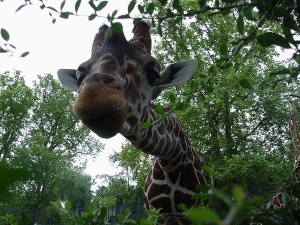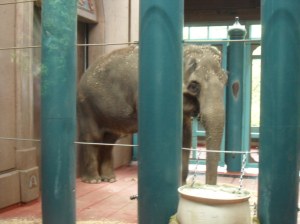For her birthday, all my friend Loreen wants is an elephant.
Last year, while visiting Thailand, Loreen discovered Elephant Nature Park, a sanctuary for abused elephants. She donated generously, a gift that her company matched, and she enabled ENP to build a shelter for their elephants.
This year, she’s aiming high. Instead of gifts, she’s asking all her friends to help her rescue another elephant at Elephant Nature Park by donating directly to ENP, or by donating to The Abraham Foundation, a U.S non-profit that supports ENP.
Elephant Nature Park and its founder Lek, are featured in the documentary film, How I became an Elephant. I was horrified to learn of the conditions of so many captive elephants in Thailand, and comforted to see Lek care for and give a refuge to survivors. In the film, she said she doesn’t buy elephants from people who will use the money to abuse more elephants. A position that I completely endorse. It does, however, take money to negotiate an elephant’s freedom and transport.
Lek offers elephants over 100 acres to roam, form natural groups, and for the first time ever, live without chains and set their own agendas. Amazingly, some of the rescued elephants have been reintroduced to the wild. Many others are too injured and worn out for life in the wild so Lek and her team offer medical care and the best quality of life possible.
In Thailand, elephants are forcibly impregnated and have their babies stolen from them. Babies are beaten “broken,” and forced to beg in busy cities at all hour of the day and night. They are malnourished and suffer greatly. Other elephants are used as beasts of burden in the illegal logging trade, even after injuries and blindness. Still others are used to give rides to tourists or perform tricks such as playing instruments, sports, or painting.
How to help
- If you’re in the Seattle area, RSVP to Loreen’s fundraising birthday bash on October 24th, 2015.
- Look at the Elephant Nature Park’s list of ways to help.
- Donate to Elephant Nature Park at their site or, if you’re in the US and work for a company that matches donations, go through The Abraham Foundation, a 501(c)(3).
- Never ride an elephant or pay to see captive elephants perform (dance, paint, or anything else). Even if the act itself looks harmless, the ways elephants are physically and emotionally abused to get them to learn tricks is abhorrent).
- Volunteer at the Elephant Nature Park next time you’re in Thailand!
























